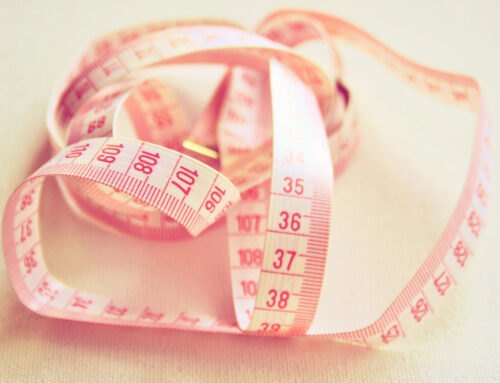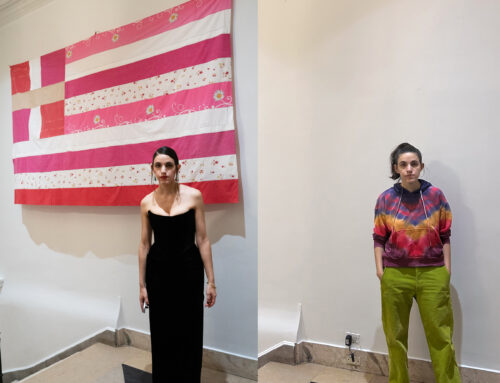Ask anyone to name the most influential inventors of all time and you’ll hear the same names over and over: Thomas Edison, Steve Jobs, the Wright Brothers, and the list goes on. From elementary school, we are taught that the lightbulb and the airplane revolutionized our lives. But simultaneously along the way, females have been curating their own monumental inventions that have an equal, if not, larger effect on our day-to-day lives. From inventions in science and technology, to clothing and food, we owe our thanks to strong and creative women. Here’s to them.
Women were always born with breasts, but not always the best bras to help support them. Until Mary Phelps Jacob invented the modern bra, women were forced to wear bulky, large, and uncomfortable corsets underneath their clothes. Corsets were tight and constricting and were wide enough to cover the whole torso. Jacob was only nineteen years old when she decided that discomfort would no longer be an option. While trying on a delicate silk gown for a debutante ball, Jacobs became frustrated by the unflattering and uncomfortable corset showing underneath the thin fabric of her gown. Determined to create a better option, Jacobs compiled silk, ribbon, and a cord which she stitched together using needles and thread to make her first prototype of a bra. Becoming the first woman to patent her design for a bra in the United States, Jacob’s invention did more than just provide support for women’s breasts. Women were finally freed from the discomfort and weight of a large metal corset, trading them in for soft and flattering silk bras. Jacobs went on to open a factory where she employed women to make and sell her modern bra out of colored silk. Without the same metal parts as corsets, these bras helped the war effort of World War I, where metal was rationed off to help build tanks and other military equipment. Bras made and worn today echo the same design that Jacob patented more than a century ago, and still carry the same standard that women should feel good as well as look good in a piece of clothing.
Usually a dreaded task, the act of changing a baby’s diaper is characterized by the unpleasant smell and unsettling nature of cleaning up another person’s waste. But it would have been a lot worse if it weren’t for Marion Donovan’s invention of the disposable diaper. 95% of babies in the United States wear disposable diapers today, although male manufacturers who repeatedly turned down Donovan’s designs almost fifty years ago were certain that her invention would not sell. These manufacturers were convinced that women were content with using difficult and filthier reusable cloths, even if they weren’t the ones changing diapers multiple times a day. Donovan was a mother of two, which came with a lot of responsibility and a lot of time having to change diapers. At the time, rubber “baby pants” were used which not only had to be washed multiple times but gave the children horrible rashes from the rubber that would cut into their bellies and bottoms. First experimenting with shower curtains and then switching to using softer nylon material, Donovan sewed together pockets of the breathable material that could be stuffed with absorbent material. However, this new “Boater” diaper was rejected by large manufacturing companies, most of which were led by men who claimed that Donovan’s product was unnecessary and unwanted by American women. Taking matters into her own hands, Donovan eventually decided to go into manufacturing herself, and the “Boater” was sold at Saks Fifth Avenue in 1949. Even when this original “Boater” did sell nationwide, manufacturers still were reluctant to pick up Donovan’s other designs and let a woman into their manufacturing territory. It was a slap in the face to a woman who had been changing her children’s diapers for years, and to all women who wanted to make a breakthrough in a male-dominated world. Donovan finally received a patent on her “boater” diapers in 1951, before selling the rights to the Keko company and creating a second patent on fully disposable diapers in 1961.
We often hear that “necessity is the mother of invention”, or the notion that problems create and fuel the need for solutions. Throughout history, strong and innovative women like Jacob and Donovan have created important solutions to everyday problems, including those for women. But the road from problem to solution wasn’t easy, as both Jacob and Donovan were shut down by men who thought they knew everything about what they were doing, or that society was perfect as is. These women were not afraid to take the issues into their own hands, and redefine what had been previously decided for them. Not willing to settle for what they knew did not solve their problems, Jacobs, Donovan, and countless other women decided to create solutions for themselves. Whether it be inventing something new, discovering a cure for a fatal disease, or changing legislation in the male-dominated halls of Congress, all women have the power to change the status quo, no matter who objects. After all, that’s how innovation is made.
This article is an excerpt from Issue 2: Innovation. Read the full issue here and purchase a copy here.




